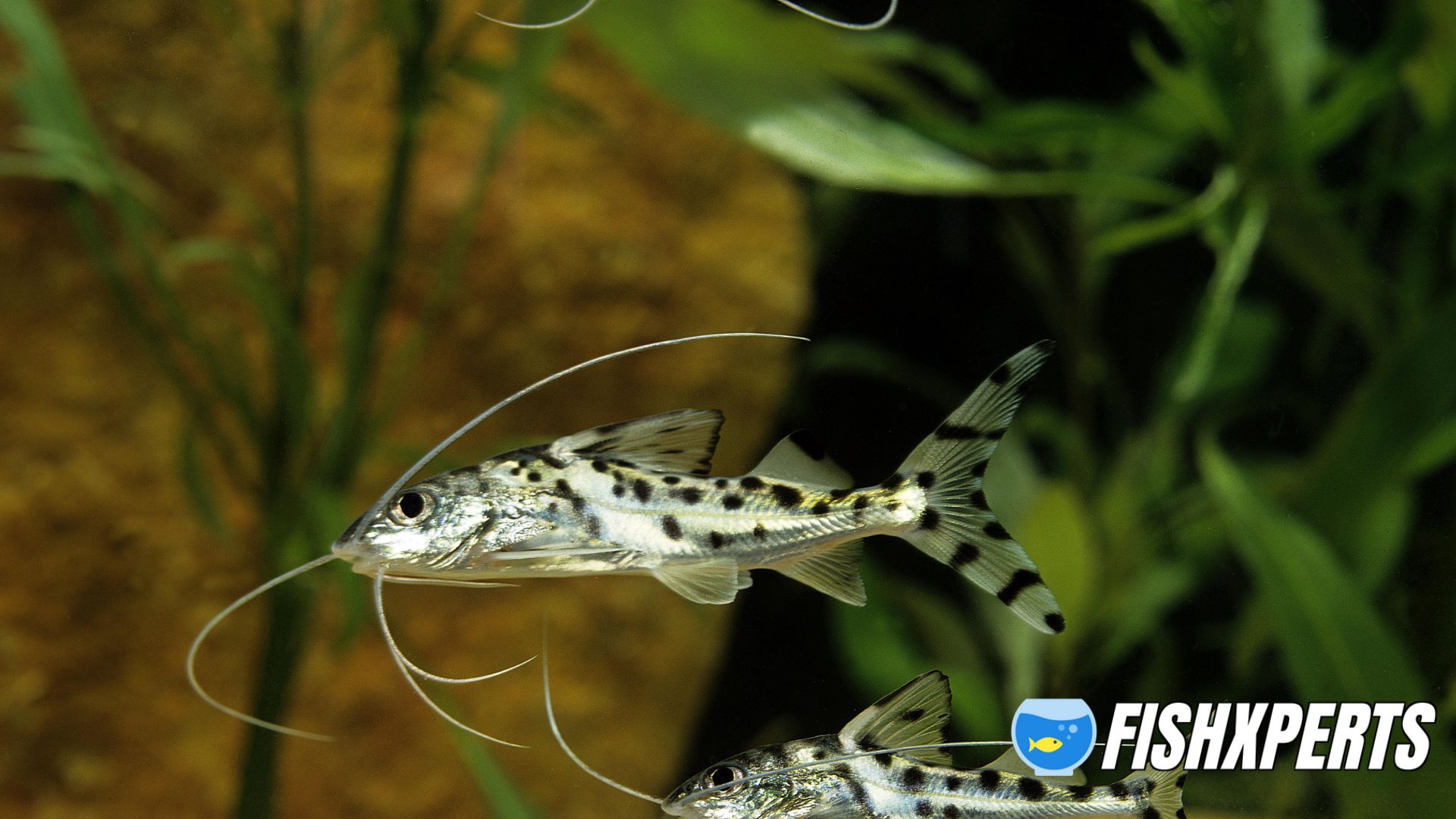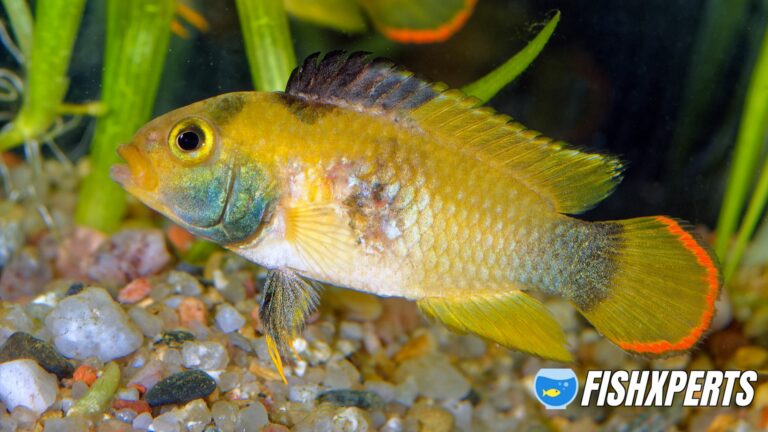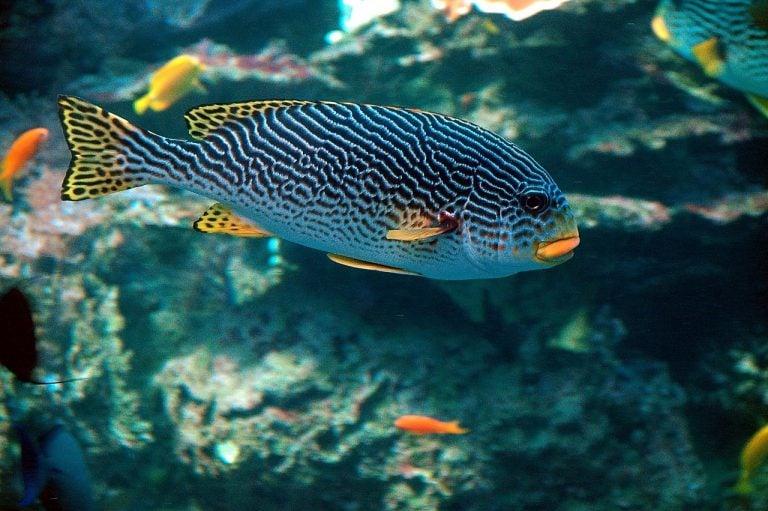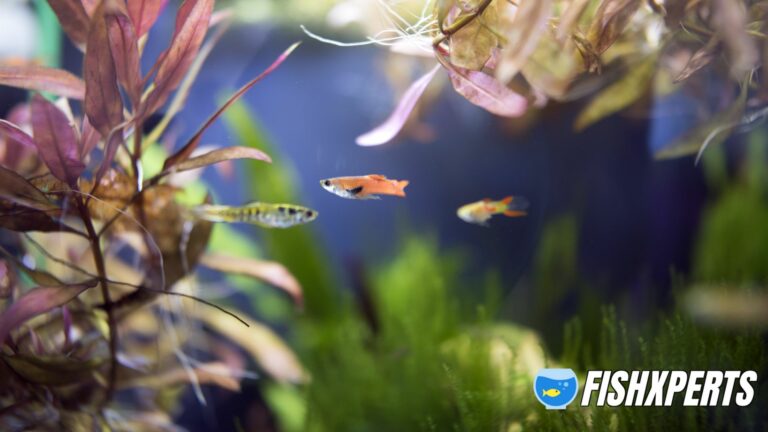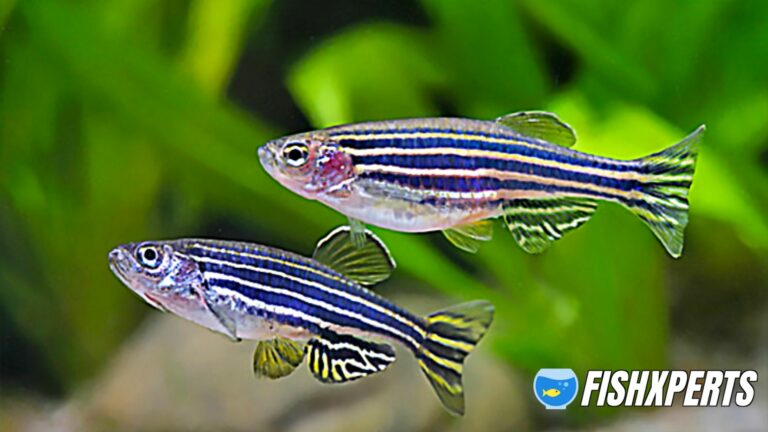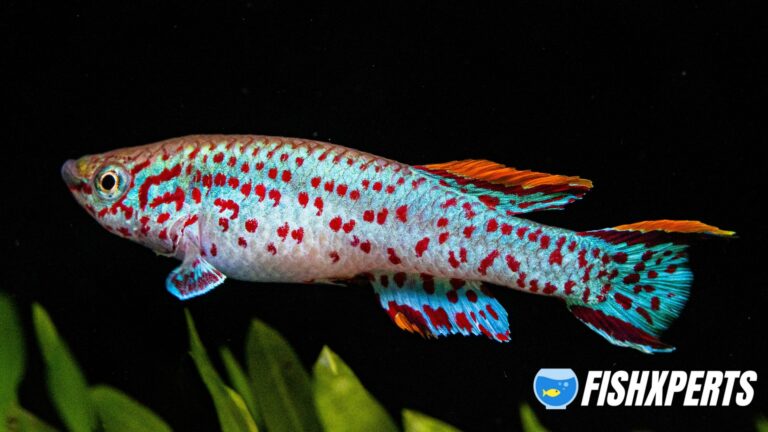Pictus Catfish Care
Overview
The Pictus Catfish (Pimelodus pictus) is a popular freshwater aquarium fish belonging to the family Callichthyidae.Native to South America, it is found in the Paraguay-Paraná, Amazon, and Orinoco basins. It is a hardy and peaceful fish that does well in a community aquarium.
The Pictus Catfish is a small to medium-sized fish, reaching a maximum length of about 18 cm (7 in). It has a long, slender body with a pointed head. The body is brown to grey in color, with dark spots and bars. The fins are transparent.
The Pictus Catfish is a peaceful fish that does well in a community aquarium. It is an active swimmer and does best in a tank with plenty of hiding places. It is a good choice for beginners, as it is relatively easy to care for.
The Pictus Catfish is a omnivore and will eat a variety of foods, including live, frozen, and flake foods. It is a good idea to supplement its diet with vegetables and sinking pellets or tablets.
The Pictus Catfish is a popular aquarium fish that is easy to care for and does well in a community tank.
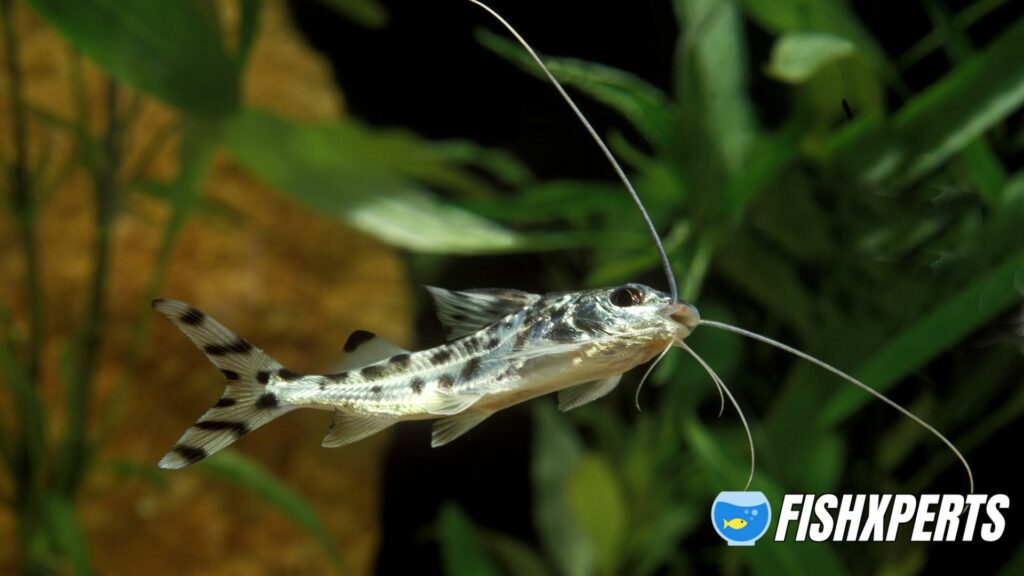
Pictus Catfish Care Tips In Brief
Pictus catfish are a popular addition to many aquariums, and with good reason! These hardy fish are relatively easy to care for and make a beautiful addition to any tank.
Here are a few tips on how to care for your pictus catfish:
- Provide plenty of hiding places and cave-like structures for your fish to feel secure.
- Pictus catfish are known to be fin nippers, so avoid housing them with fish that have long, flowing fins.
- Feed your pictus catfish a variety of foods, including live, frozen, and flakes.
With a little bit of care, your pictus catfish will thrive in your aquarium!
Lifespan
The lifespan of a pictus catfish is typically around 10 years, although some have been known to live up to 15 years. They are a hardy fish and can tolerate a wide range of water conditions, but prefer warm water.
Pictus catfish are a popular choice for aquariums because of their peaceful nature and hardiness. They are an easy fish to care for and do well in most community aquariums.
Appearance
The Pictus Catfish is a long, slender fish with a unique appearance. They have a long, pointed head with large eyes and a slightly forked tail. Their body is covered in small, black spots, and they have a white underside. They can grow to be up to 18 inches long.
Pictus Catfish are a popular choice for aquariums because of their unique appearance. They are a hardy fish and can adapt to a variety of water conditions. They are peaceful fish and get along well with other tank mates.
Average Size
The average size of a Pictus catfish is around 4-6 inches (10-15 cm). Some specimens have been known to grow up to 8 inches (20 cm), but this is rare. They are a relatively small species of catfish, which is part of their appeal to many aquarium hobbyists.
Tank Size & Setup
The Pictus Catfish is a freshwater fish that is native to South America. The fish is named for its unique spotted pattern which is similar to that of a leopard. The Pictus Catfish is a popular fish among aquarists and is known for being a peaceful community fish. The fish is also known to be a good algae eater.
The Pictus Catfish is a hardy fish that can live in a variety of water conditions. The fish does best in an aquarium that has a sand or gravel substrate. The Pictus Catfish prefers to have hiding places such as caves or rocks in the aquarium. The Pictus Catfish is a nocturnal fish and is most active at night.
The Pictus Catfish grows to a maximum length of 18 inches. The fish is a slow grower and can live up to 10 years in captivity. The Pictus Catfish is a schooling fish and should be kept in groups of 4 or more fish.
The Pictus Catfish is a omnivore and will eat a variety of foods. The diet of the fish should include meaty foods such as brine shrimp and blood worms. The diet should also include vegetable matter such as algae wafers. The Pictus Catfish should be fed 2-3 times per day.
Water Parameters
Aquarium water parameters are measurements of water quality. They are typically measured with test kits and include ammonia, nitrite, nitrate, pH, and water hardness. Ammonia and nitrite should be kept at zero in a fish tank, as even low levels can be harmful to fish.
Nitrate levels can be kept at a moderate level, as some fish actually prefer slightly elevated nitrate levels. pH should be kept within a certain range, depending on the type of fish being kept. Most fish do well in a neutral pH, but some fish prefer slightly acidic or slightly alkaline water. Water hardness is also important, as some fish prefer soft water while others prefer hard water.
Water parameters are important to consider when setting up a fish tank. Different fish have different preferences for water quality, so it is important to research the specific requirements of the fish you plan to keep. By maintain proper water parameters, you can create a healthy environment for your fish to thrive in.
Decorations and plants
Aquariums can be decorated with a variety of items such as rocks, driftwood, live or artificial plants, and decorations. These items can be used to create a natural-looking environment for your pictus catfish, or a more colorful and exciting setup.
Live plants are a great way to add some color and interest to your aquarium, and they can also provide your fish with hiding places and oxygenate the water. Artificial plants can be just as beautiful as live plants, and they are often more durable and easier to care for.
When choosing decorations and plants for your pictus catfish tank, be sure to avoid items that could be harmful to your fish. Sharp edges, poisonous plants, and chemicals should all be avoided.
With a little bit of planning, you can create a beautiful and fish-friendly environment for your pictus catfish that they will enjoy for years to come.
Lighting
The pictus catfish is a nocturnal fish, meaning it is active at night and sleeps during the day. Because of this, it is important to provide them with low light conditions in their tank. There are a few ways to do this, including using a black background or covering the tank with a dark cloth.
If you choose to use a light in the tank, make sure it is dim and does not produce too much heat. A fluorescent light bulb designed for aquariums is a good option.
Filtration
Filtration is an important part of keeping your Pictus Catfish healthy and happy. There are many different types of filtration available on the market, so it is important to do your research to find the best option for your setup.
Canister filters are a popular choice for Pictus Catfish tanks. They are easy to set up and maintain, and they provide excellent filtration. Another option is a hang-on-back filter, which is also easy to set up and maintain. Whichever type of filter you choose, be sure to get one that is rated for your tank size.
In addition to your main filter, you may also want to add a powerhead to your setup. A powerhead will help to circulate the water and keep your Pictus Catfish healthy.
When choosing a filter for your Pictus Catfish tank, be sure to do your research and find the best option for your specific setup.
Common Potential Diseases:
While the pictus catfish is a hardy fish, there are some potential diseases that can affect them. Some of the more common diseases include:
Ich: Also known as white spot disease, ich is a very common fish disease that can affect pictus catfish. Ich is caused by a parasitic infection and can cause the fish to develop white spots on their body and fins. If left untreated, ich can be fatal to fish.
Hole in the Head Disease: This disease is caused by a parasitic infection and can cause the fish to develop holes in their head. If left untreated, hole in the head disease can be fatal to fish.
Fin Rot: Fin rot is a bacterial infection that can cause the fish’s fins to rot away. If left untreated, fin rot can be fatal to fish.
If you suspect your pictus catfish is sick, it is important to take them to a veterinarian that specializes in fish. Early diagnosis and treatment is important for the health of your fish.
Food & Diet
The Pictus Catfish is a voracious eater and will consume just about anything that fits into its mouth. In the wild, its diet consists of small fish, crustaceans, and insects. In captivity, it will readily accept most sinking pellets and tablets, as well as frozen and live foods.
To maintain a healthy diet, it is important to offer a variety of foods. A good quality sinking pellet or tablet should form the basis of the diet, supplemented with frozen and live foods.
Behavior & Temperament
The Pictus Catfish is a peaceful fish that is well suited for community tanks. It is an active fish that will often be seen swimming in the open water column and exploring its surroundings. The Pictus Catfish is a nocturnal fish and will be most active at night.
The Pictus Catfish is an omnivorous fish and will accept a variety of foods. It is a hardy fish that is resistant to disease. The Pictus Catfish is known to be a long-lived fish with some individuals living for over 20 years.
The Pictus Catfish is a social fish that does best when kept in groups. It is a peaceful fish that can be kept with a variety of other fish species. The Pictus Catfish is an ideal fish for the beginner aquarist.
Tank Mates
Pictus catfish are peaceful community fish that make good tank mates for a variety of other fish. They do well with other peaceful bottom dwelling fish such as Corydoras and loaches. They can also be kept with a variety of small to medium sized peaceful community fish such as tetras, danios, and barbs.
Pictus catfish are not aggressive fish, but they can be territorial. They should not be kept with fish that are much larger than them or with fish that are known to be aggressive.
Pictus catfish are good community fish and make good tank mates for a variety of other fish.
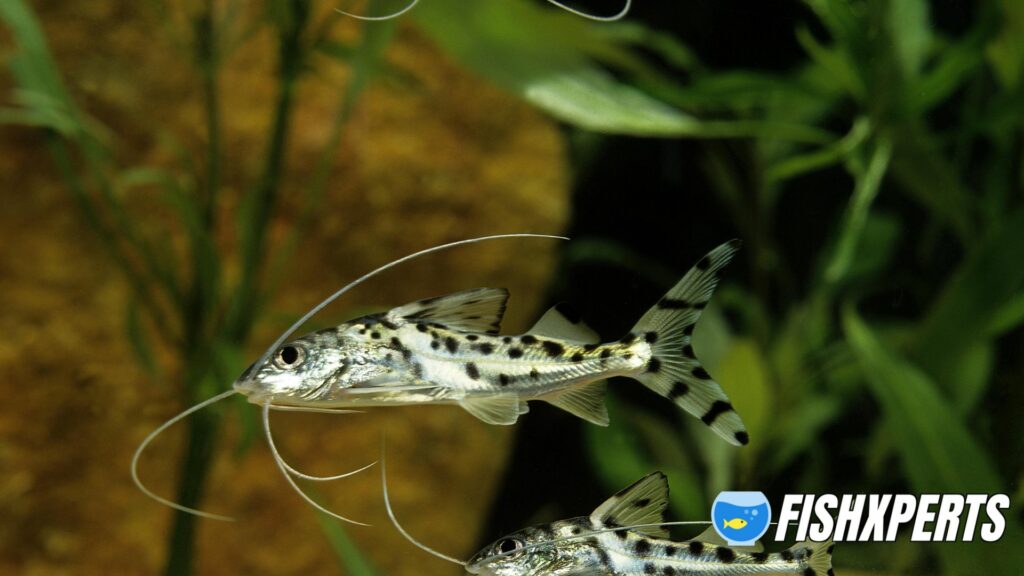
Pictus Catfish: Interesting Facts & Stats
- The Pictus Catfish is a freshwater fish that is native to South America.
- The Pictus Catfish is a member of the family Pimelodidae.
- The Pictus Catfish is also known as the Dwarf Corydoras, Painted Catfish, and Spotted Catfish.
- The Pictus Catfish is a popular aquarium fish.
- The Pictus Catfish is a peaceful fish that is typically found in schools.
- The Pictus Catfish is an omnivorous fish that feeds on both plant and animal matter.
- The Pictus Catfish is a hardy fish that is relatively easy to care for.
- The Pictus Catfish is a sexually dimorphic fish, meaning that the males and females can be distinguished by their physical appearance.
- The male Pictus Catfish is typically smaller than the female and has a more slender body.
- The Pictus Catfish is a spawning fish, meaning that it reproduces by releasing eggs into the water which are then fertilized by the male.
Breeding & Mating
Pictus catfish are typically easy to breed in the home aquarium. They are an egg-laying species, and the female will lay a large number of eggs which the male will then fertilize. The eggs will hatch after a few days, and the fry will be free-swimming a few days after that.
To induce spawning, the water temperature should be raised to around 82 degrees Fahrenheit and the tank should be well-oxygenated. The fish will typically spawn in the morning, and the eggs will be laid on a suitable surface such as a piece of driftwood or a plant leaf.
Once the fry are free-swimming, they can be fed on small live foods such as brine shrimp nauplii or micro worms. The fry grow quickly and will reach adult size within a few months.
FAQ
Can You Keep Pictus Cats Together?
Yes, Pictus cats can be kept together in an aquarium. They are a schooling fish and do best when kept in groups of six or more. They are peaceful fish and get along well with other fish species.
How Big of Tank Does a Pictus Catfish Need?
A healthy Pictus catfish should have plenty of room to swim and explore. A good rule of thumb is to provide at least a 20-gallon tank for a single fish, and at least a 30-gallon tank if you plan to keep multiple fish together. Larger tanks are always better, and will provide your fish with a more stable environment.
How Often Should I Feed Pictus Catfish?
Ideally, pictus catfish should be fed 2-3 times per day. However, they are opportunistic feeders and will accept food at any time. If you are unable to feed them this often, it is best to underfeed them rather than overfeed them. Overfeeding can lead to water quality issues and health problems for your fish.
Why Is My Pictus Catfish Swimming Up and Down?
Pictus catfish are omnivorous and will eat a variety of foods, but they do require a diet that is high in protein. In the wild, they typically eat insects, small crustaceans, and other small invertebrates. In the aquarium, they can be fed a diet of live, frozen, or freeze-dried foods, as well as high-quality dry foods.
Ideally, pictus catfish should be fed 2-3 times per day. However, they can be trained to eat once per day if necessary. When feeding live or frozen foods, it is best to offer only what they can eat in a few minutes to avoid overfeeding.
How Long Does It Take A Pictus Catfish To Grow To Full Size?
A Pictus Catfish will take approximately 2-3 years to grow to full size. This fish is a hardy species that does well in a variety of water conditions, making it a popular choice for aquariums. They are a peaceful fish that gets along well with other tank mates and make an excellent addition to any community tank.
Are pictus catfish aggressive?
While pictus catfish are not typically aggressive, they are known to be curious and may nibble on tank mates if they are small enough to fit into their mouths. If you are concerned about aggression, it is best to keep pictus catfish with other larger fish.
Can pictus catfish live with cory catfish?
Yes, pictus catfish and cory catfish can live together peacefully. They are both peaceful, bottom-dwelling fish that do well in groups. Cory catfish will help keep the tank clean and Pictus catfish are interesting to watch as they swim in and out of the Cory catfish’s “caves.”
Are Pictus Catfish Aggressive?
Yes, pictus catfish are aggressive, especially when they are kept in a group. They are known to fight with each other and with other fish in the tank. It is best to keep them in a tank with other fish that are similar in size and temperament.
Why does my pictus catfish have spots?
The spots on your pictus catfish are most likely caused by a condition known as “ich.” Ich is a parasitic infection that is common in freshwater fish. It is characterized by white spots on the fish’s body. Ich can be treated with a variety of methods, including medications and salt baths.
Can a Pictus catfish live in a 10-gallon tank?
Yes, a Pictus catfish can live in a 10-gallon tank. This fish is a peaceful community fish that does well in groups, so a 10-gallon tank is a good size for them. They are also an active swimmer, so a larger tank is better for them.
Can Pictus catfish live with guppies?
Yes, Pictus catfish can live with guppies. They are both peaceful fish that do well in community tanks.
Will Pictus eat neon tetras?
Neon tetras are a popular choice for many aquarists, and they can make a great addition to your tank. However, you should be aware that pictus catfish are known to eat smaller fish, so if you’re planning on keeping neon tetras in your tank, you’ll need to make sure they’re big enough that the pictus catfish can’t eat them.
Can you have one Pictus catfish?
Yes, you can have one Pictus catfish. They are a peaceful community fish that do well in a group. A single fish can become stressed and may not do as well as it would in a group.
Do Pictus catfish eat small fish?
Yes, Pictus catfish do eat small fish. They are opportunistic feeders that will consume anything they can fit into their mouths. In the wild, they are known to eat other fish, crustaceans, and insects. In captivity, they should be fed a variety of foods, including live, frozen, and freeze-dried foods.
Do pictus catfish need a bubbler?
No, pictus catfish do not need a bubbler. They are a peaceful community fish that do well in a variety of conditions. A bubbler may be beneficial if you have other fish in the tank that require high oxygen levels, but it is not necessary for the pictus catfish.
Do pictus catfish make noise?
Yes, pictus catfish make noise! They are known to make a grunting noise when they are excited or agitated.
Final Thoughts
If you’re looking for an interesting and active fish for your aquarium, the Pictus catfish is a great choice. They are relatively easy to care for and are very entertaining to watch. However, there are a few things to keep in mind before adding one to your tank.
First, Pictus catfish grow to be quite large, so make sure you have enough room in your aquarium. They also prefer to live in groups, so it’s best to add at least three to your tank.
Lastly, Pictus catfish are known to be fin nippers, so they may not do well with other fish that have long fins. If you’re considering adding a Pictus catfish to your aquarium, be sure to do your research and choose tank mates carefully.
Topics Covered

